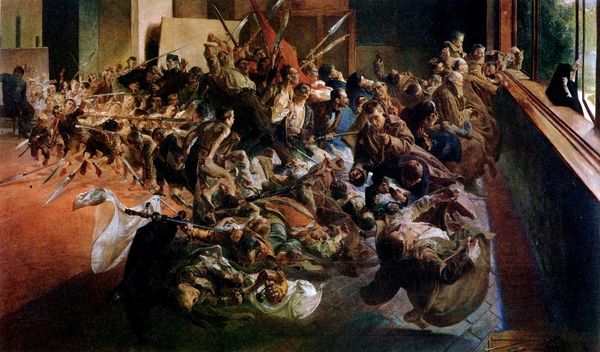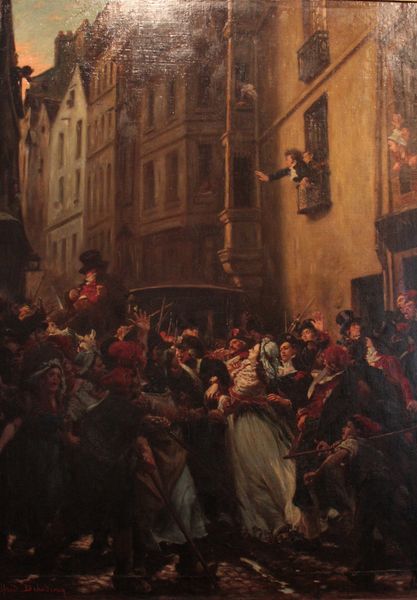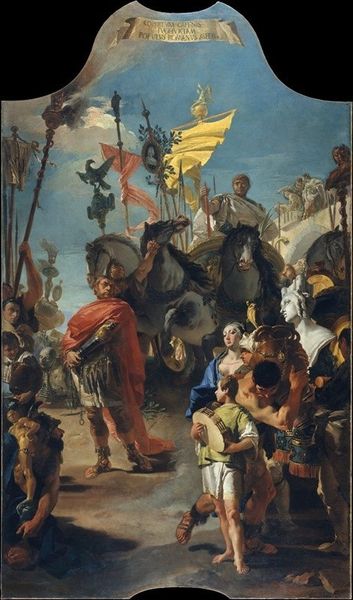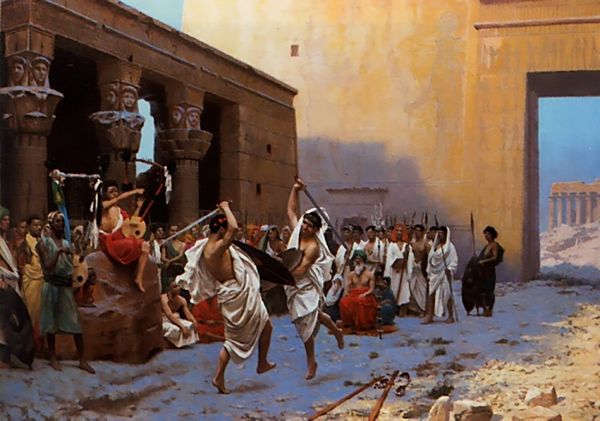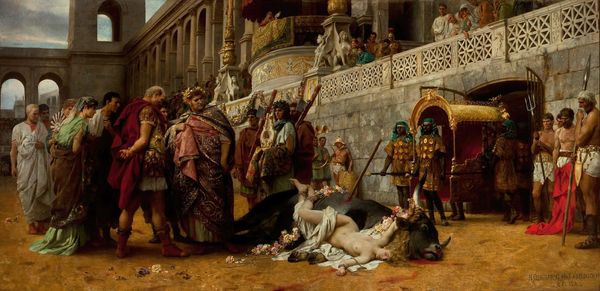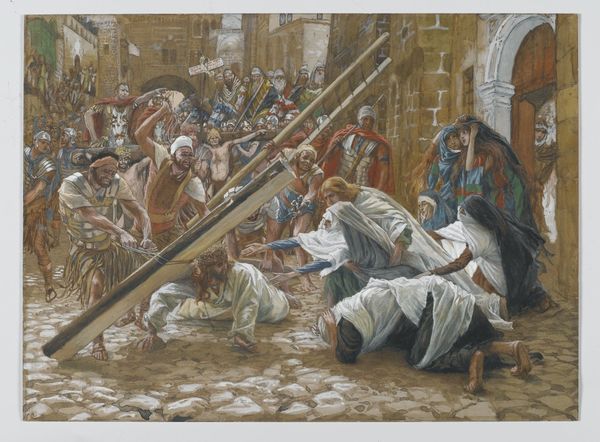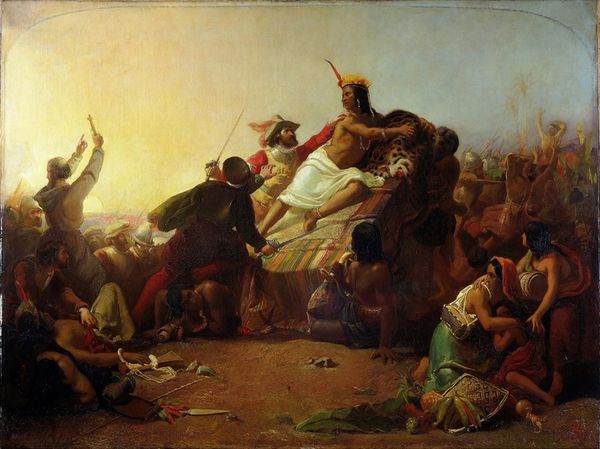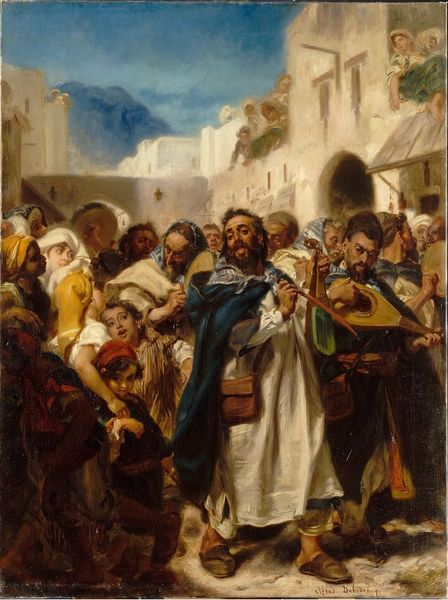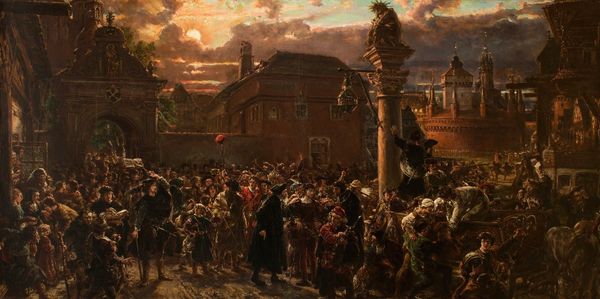
#
graffiti art
#
impressionist painting style
#
street art
#
street graffiti
#
underpainting
#
urban art
#
mythology
#
painting painterly
#
watercolour bleed
#
mixed media
#
watercolor
Copyright: Public domain
Curator: Alfred Dehodencq's "The Execution of the Jewess (Sol Hachuel)," painted in 1860, depicts a harrowing scene steeped in the orientalist visions of 19th-century France. The composition alone, with its stark contrasts and crowded figures, practically screams historical narrative. Editor: My gut reaction? It’s unsettling. The lighting feels so dramatic, almost theatrical, as though we’re peering into a macabre stage play. The tension is palpable. That young woman's gaze… It's haunting. Curator: It certainly is. Dehodencq situates the viewer right in the midst of this public execution. Sol Hachuel, a Jewish woman executed for alleged apostasy in Morocco, becomes a symbol of religious and cultural conflict in the artist’s rendition. The politics of imagery are clearly at play here. Editor: Politics aside, I'm drawn to the swirling chaos of the crowd. You almost get lost in the faces – the voyeurism, the outrage, the fear… It’s a cacophony of human emotions captured in a single, brutal moment. I think of Goya when I see this, only with more sunshine, ironically. Curator: Indeed. Dehodencq leverages the orientalist genre, but in ways that can both reflect and critique contemporary attitudes towards North Africa. The details in the architectural background hint at an exotic otherness, which was very much in vogue in Europe at the time. Yet, the overt brutality challenges simplistic romanticizing. Editor: See, what hits me is the solitude of the woman. Everyone else is part of this horrible event, caught up in it – even the victim is somewhat connected to them via her plight. Yet, as the subject, the jewess somehow isn't 'present', or belonging, and instead occupies a unique plane. That is what stays in my mind and haunts. Curator: I concur. It is that tension between representation and the complexities of cultural narratives that makes Dehodencq's work so compelling—and controversial. A historical glimpse charged with layered meaning. Editor: Absolutely. It serves as a brutal reminder of how perception and human emotions have shaped how we process our relationship to human violence throughout history. Thanks for bringing this to light, to make me contemplate what really sits behind that stage play.
Comments
No comments
Be the first to comment and join the conversation on the ultimate creative platform.

